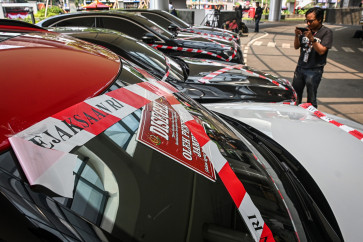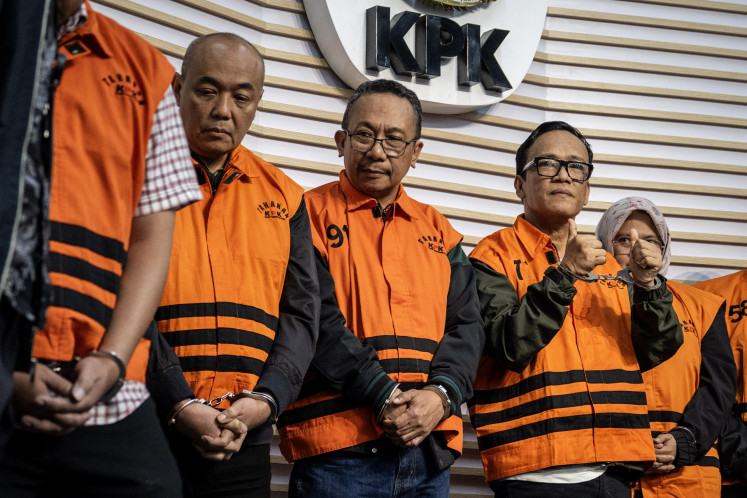Popular Reads
Top Results
Can't find what you're looking for?
View all search resultsPopular Reads
Top Results
Can't find what you're looking for?
View all search resultsLandfill fires are preventable
At least one third of the country’s landfills are still using the open-dumping method, according to the ministry.
Change text size
Gift Premium Articles
to Anyone
I
t is relatively easy to find news about fires in Indonesia during the dry season, especially now that the El Niño weather phenomenon has caused a long drought in recent months. But unlike previous years, we have seen an increase in landfill fires this year.
At least seven landfills in Central and West Java have caught fire in the past few months, including the Jatibarang landfill in Semarang and the Putri Cempo landfill near President Joko “Jokowi” Widodo’s hometown of Surakarta, both in Central Java.
The worst fire occurred in the 25-hectare Sarimukti landfill in West Bandung regency, West Java, which used to be a waste hub for Bandung and its surrounding cities. Authorities are still struggling to extinguish the fire that has burned at least 20 hectares of the landfill since last month and caused air pollution that affects thousands of people living in the area.
This series of landfill fires has raised questions about whether the poor state of the country’s waste management system has caused these fires, a trend that authorities should consider in order to prevent future fires.
According to the officials, most fires that broke out in the mountains of trash this year were caused by high concentrations of landfill gas, mostly flammable methane. The gas was formed by the decomposition of organic waste in the landfill.
After the fires started, strong winds and an abundance of flammable waste in the landfills exacerbated the situaiton, causing the fires to spread quickly and engulf up to 20 ha, such as was the case with Sarimukti.
These problems are highly preventable. The regions just need better waste management systems, such as controlled or sanitary landfills rather than open dumping sites.
In a controlled or sanitary landfill, the waste is buried to accelerate decomposition and prevent it from burning. The facility should also have a methane capture system to capture the flammable gas from inside the landfill, which can be used to generate heat and power on site.
Authorities claimed that Jatibarang and Putri Cempo were designed to function as sanitary landfills, but waste was still dumped without proper treatment, according to the Central Java chapter of the Indonesian Forum for the Environment (Walhi).
The 2008 Waste Management Law requires all landfills in the country to be sanitary landfills. Furthermore, the Environment and Forestry Ministry restricted the operation of open dumping sites in 2013.
However, most regional governments, which are authorized to draft their respective waste management strategies, are lagging on this front. At least one third of the country’s landfills are still using the open-dumping method, according to the ministry.
The regions claimed that they faced several hurdles, such as a lack of soil needed to bury daily waste, which is growing because of the increase in population and changing consumer spending habits.
There are also cheaper alternatives to prevent landfill fires, including separating organic waste from inorganic waste. But this can only be effective if the sites for reducing, reusing and recycling waste work effectively and receive persistent support from both the regional administration and society.
Studies have shown that these facilities could be effective at reducing the amount of garbage dumped into landfills. Less waste would mean less methane to worry about.
We know that handling waste is a dirty job that nobody wants to do. However, it is important for regional governments to start working harder to make sure that our waste is properly managed.
Otherwise, it is only a matter of time until we see more landfills catch fire.











